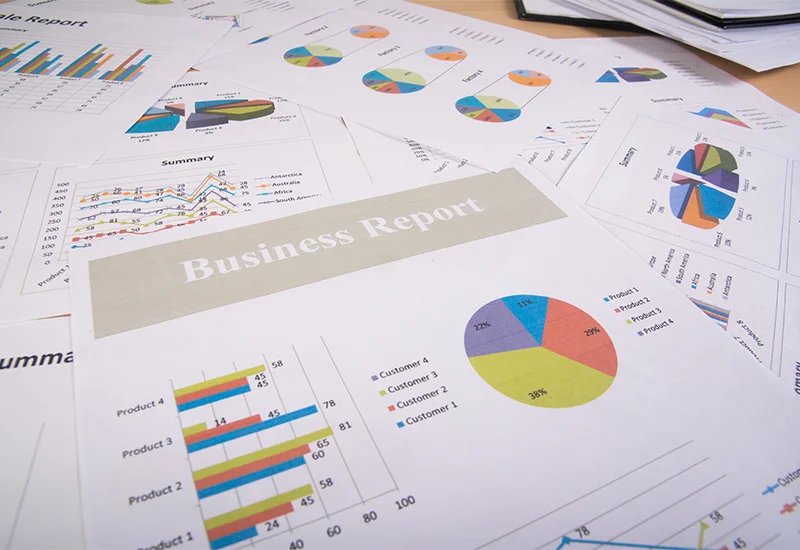It’s important you understand the Construction Industry Scheme (CIS) and how it affects your pay as a subcontractor, with tax deducted at source by contractors. Many self-employed workers miss out on significant CIS tax refunds due to unclear advice or poor record-keeping. By claiming allowable expenses like tools, travel, and work-related training, and keeping accurate records, you can boost your refund. Seeking support from a specialist accountant experienced in CIS can enhance your return’s accuracy and help you meet deadlines, avoiding costly errors. Learn more about CIS tax [here](https://www.gov.uk/what-is-the-construction-industry-scheme) and [how to claim](https://taxaid.org.uk/tax-information/self-employed-or-business-owner/cis-subcontractor).
Key Takeaways:
- Understanding the Construction Industry Scheme (CIS) is crucial for subcontractors who have tax deducted at source by contractors, as it affects how your income is taxed and refunded.
- Claiming allowable expenses—such as tools, protective clothing, travel costs, training courses, and even work-related mobile phone use—can significantly increase your CIS TAX refund when properly documented.
- Maintaining accurate and consistent records, including receipts and mileage logs, supports your expense claims and helps avoid issues with HMRC during your self-assessment submission.
- Seeking assistance from a specialist accountant experienced in CIS TAX refunds can improve the accuracy of your return and ensure you do not miss any eligible deductions.
- Filing your self-assessment on time and correctly is important to avoid penalties and delays; many subcontractors miss out on sizeable refunds due to lack of knowledge or poor guidance, but proper claims mean getting back what you are owed for your hard work.

Decoding the CIS Tax System: What Every Subcontractor Must Know
Unpacking CIS: What It Means for Your Income
The Construction Industry Scheme (CIS) requires contractors to deduct tax and National Insurance contributions from payments made to subcontractors within the construction sector. Typically, if you’re a self-employed subcontractor, you’ll have 20% of your gross payments deducted under the scheme, though this rate could be higher if you’re not registered with HMRC for CIS. These deductions aren’t an additional tax but an advance payment towards your overall tax bill at the end of the financial year.
As deductions are made automatically by your contractor, it impacts how much you actually take home each month. However, the deducted amount may not reflect your total tax liability once allowable expenses are considered. By accurately declaring your business expenses and filing your self-assessment, you might be eligible for a refund, sometimes amounting to hundreds or even thousands of pounds. To find out more about maximising your refund, check out this Average CIS Tax Rebate. How can I get the most out my claim?.
The Role of Contractors in Tax Deductions
Contractors have a legal responsibility to verify that subcontractors are registered with HMRC for CIS before making payments. Once confirmed, they deduct the correct tax percentage before paying you. This system ensures tax is collected at source, reducing opportunities for underreporting income. For example, if you invoice £1,000, a contractor registered for CIS will deduct £200 before payment, passing that amount to HMRC on your behalf.
If you are not registered, contractors must deduct tax at an increased rate of 30%, which directly reduces your take-home pay. Contractors also submit monthly returns to HMRC detailing payments and deductions made under the scheme. This transparency helps you match your records and tax returns accurately with HMRC’s data, but it also means any discrepancies or late filings on your part can cause issues.
Contractors play a pivotal role in maintaining compliance under CIS, but it’s your responsibility to keep detailed records and ensure your registration status is up to date. Working closely with contractors who understand the scheme well can make a significant difference, particularly when it comes to obtaining accurate deduction information and resolving any disputes promptly.
Deductions You Shouldn’t Overlook: Common Allowable Expenses
Many self-employed workers in construction miss out on legitimate tax relief by overlooking everyday expenses directly related to their trade. Beyond the obvious costs like materials and wages, HMRC permits deductions on items such as protective clothing, professional training, and even work-related mobile phone use. For example, safety boots and high-visibility jackets bought specifically for site work can be claimed, while using your personal mobile phone for calls or data linked to subcontracting may qualify for a proportionate expense claim. Keeping detailed receipts and separating personal from business expenditure will support these claims effectively.
Expenses that may seem minor, like purchasing tool sharpening services or paying for fuel used during work travel, can add up over the tax year and significantly reduce your taxable income. Overlooking these can mean forfeiting a sizeable CIS tax refund. Sorting out your records to categorise such expenses correctly enables you to present a comprehensive and accurate claim. Specialists familiar with construction-specific costs can help spot allowances that are often missed, helping you keep more of what you earn.
Tools and Equipment: Claiming Back What You Need
Tools, both hand-held and power-operated, form the backbone of your daily work and are legitimately claimable expenses under CIS tax rules. Whether you purchase a new drill, replace worn-out chisels, or invest in a high-quality tape measure, these costs can be offset, provided they’re used solely or mainly for your trade. HMRC distinguishes between items that wear out quickly, which can be fully deducted immediately, and those expected to last several years, which are typically claimed through capital allowances.
Keeping a detailed inventory of your tools with purchase dates and prices helps when submitting your self-assessment. Repairs and maintenance costs on tools—and even equipment hire fees—are also deductible. For example, paying £200 to get a grinder serviced or renting scaffolding equipment for a specific project qualifies for tax relief. You’ll improve the accuracy of your CIS tax refund claim by distinguishing between capital expenses and day-to-day tool costs.
Travel Costs: How to Maximise Your Mileage Claims
Travel expenses, particularly mileage, represent one of the largest yet most underestimated deductions available to self-employed construction workers. When you travel directly between sites or from your home to a site, you may be able to claim back a set mileage rate—currently 45p per mile for the first 10,000 miles in the tax year and 25p per mile thereafter on personal vehicles used for work purposes. Maintaining a comprehensive mileage log with journey details, dates, and distances is vital to support your claim.
Public transport fares, parking fees, and toll charges incurred during work trips can also be claimed. It pays to separate your personal travel from business journeys diligently, since only travel related to your contracting work counts. For frequent site visits, these travel expenses can substantially reduce your taxable profits and boost your CIS tax refund potential.
Many subcontractors fail to claim the full mileage allowance simply because their records don’t fully capture every journey or they mix personal and business miles. Using apps or mileage tracking tools simplifies this process and ensures you maximise your eligible travel expenses for your tax return.
Training and Development: Investing in Your Skills
Course fees for training directly related to your construction trade – such as health and safety certifications, specialised skills workshops, or even equipment operation licences – qualify as allowable expenses. These costs improve your expertise and employability, while also reducing your taxable income under CIS. For instance, a £350 fee for a Site Management Safety Training Scheme (SMSTS) course is deductible so long as it relates to maintaining or enhancing your current skills rather than new qualifications unrelated to your trade.
Books, study materials, and even the cost of online tutorials that support your professional development can be included. It’s crucial to confirm that training aims to retain or update existing skills rather than pivot careers, as HMRC does not usually allow costs for starting completely new trades. Accurate receipts and course description documents should be retained to justify these expenses in your filing.
Self-employed workers often overlook smaller training-related expenses such as travel to a course venue or purchasing necessary tools for practical sessions. Including these additional costs can further increase your allowable deductions and the overall CIS tax refund to which you’re entitled.
The Art of Record-Keeping: Essential Practices for Success
Accurate record-keeping forms the backbone of maximising your CIS tax refund, allowing you to claim every allowable expense related to your self-employed construction work. Every tool purchase, protective clothing item, travel expense, and even work-related mobile phone use can contribute to reducing your taxable income—provided you have solid evidence to back it up. Without well-organised documentation, HMRC may reject or question your claims, potentially leading to lost refund opportunities or even penalties. Maintaining a meticulous log of all expenses connected to your work ensures your self-assessment is built on a verifiable foundation.
Keeping consistent records throughout the tax year prevents the stress of last-minute searches for invoices or receipts. Recording mileage details, including dates, destinations, and purpose, strengthens travel expense claims, which are often overlooked or underclaimed. Even minor spendings such as parking fees or training course costs add up over time. Practising disciplined record-keeping not only safeguards your refund but equips your accountant with the necessary data to optimise your CIS tax return efficiently and accurately.
Receipts and Documentation: Building Your Case
Retaining original receipts and invoices is the most straightforward way to support your expense claims under the CIS tax framework. Physical copies stored in labelled folders or digital scans organised by date and category make retrieval effortless during tax return preparation. HMRC expects clear proof when you claim expenses like personal protective equipment (PPE), tools, or training costs, so every receipt is a piece of your financial puzzle.
Without receipts, you risk reducing your allowable expense totals or facing enquiry challenges. For example, a subcontractor once missed out on £1,200 in refunds simply because they couldn’t produce receipts for tool purchases over two years. Creating habitually organised files and avoiding relying on vague bank statements can help secure the full tax relief you deserve.
Digital Tools for Tracking and Organising Expenses
Digital apps and software designed for self-employed workers revolutionise how you manage CIS-related expenses. Automated expense trackers, mileage loggers, and receipt scanners streamline your record-keeping and reduce human error. For instance, using a mobile app that links to your bank account can instantly categorise transactions, flag allowable expenses, and store receipt images securely. This real-time tracking can prevent forgotten claims and ease the stress of self-assessment deadlines.
Many digital platforms also generate comprehensive reports tailored for accountants, speeding up the refund process and improving accuracy. Subcontractors who’ve switched to digital tools report reclaiming an average of 15-20% more on their CIS tax returns, mainly by capturing expenses that might otherwise have slipped through the cracks due to poor manual record-keeping.
Options like QuickBooks Self-Employed or ExpenseIn offer user-friendly interfaces specifically tailored for tradespeople, combining features such as automatic mileage calculation with straightforward receipt capture. Integrating these tools into your daily workflow creates an uninterrupted record of your work-related expenses, providing a robust audit trail crucial for claiming a full CIS tax refund.
Navigating the Deadline Minefield: When to File and What Happens If You Miss It
Key Dates in the Self-Assessment Calendar
For CIS subcontractors, the self-assessment deadline usually falls on 31 January following the end of the tax year, which runs from 6 April to 5 April. By this date, you must submit your return online and pay any tax owed. An earlier deadline of 31 October applies if you choose to file a paper return, but most opt for online submission given the extended timeline and ease of use. In addition, a payment on account towards the forthcoming tax year’s liability is typically due at the same 31 January deadline, with a second instalment due by 31 July.
Missing these key dates can complicate your tax affairs considerably. It’s advisable to start preparing your documentation as early as possible, especially since the CIS scheme requires detailed records of deductions made by contractors. The more proactive you are, the less likely you are to face rushed submissions or overlooked relief claims that could maximise your CIS tax refund. If you use a specialised accountant, they’ll often track these deadlines for you and help ensure nothing slips through the cracks.
Consequences of Late or Incorrect Submissions
The HMRC penalty regime kicks in quickly for late or inaccurate self-assessments. If you miss the 31 January deadline, an automatic £100 fixed penalty is issued immediately, even if no tax is owed. This can escalate with additional daily penalties of £10 per day after three months, potentially reaching £900, and further charges after six and twelve months. Errors or omissions—such as failing to claim allowable expenses related to CIS or not accurately reporting tax deducted at source—can also trigger inquiries and further scrutiny.
Interest charges accrue on any unpaid tax from the due date until full payment is received, increasing the financial burden. Incorrect submissions might delay your refund or even lead to an underpayment that remains uncovered, costing you more in the long term. Sometimes contractors who deduct CIS tax at the wrong rate find themselves needing to reconcile significant amounts retrospectively, a process that HMRC monitors closely. Filing accurately and on time helps avoid this costly cycle.
Persistent issues with late or incorrect self-assessment filings risk escalating beyond penalties, potentially attracting more serious investigations or compliance checks. HMRC’s use of digital tracking tools increases the likelihood of catching discrepancies early, so relying solely on intuition to handle complex CIS tax matters can be risky. Employing a specialist accountant can considerably reduce errors and the chance of missed deadlines, safeguarding your entitlements and maintaining a smoother financial position.
Breaking Down the Myths: Why Many Self-Employed Workers Leave Money on the Table
Misunderstandings About Eligibility for Refunds
Many subcontractors assume that because tax is deducted at source via the Construction Industry Scheme, they are either ineligible to claim back any refund or that their potential refund will be minimal. In reality, thousands of self-employed workers overlook sizeable tax relief simply because they believe their deductions are final. Eligibility for CIS tax refunds extends beyond just obvious expenses. Costs such as tools, protective clothing, business-related travel, and even mobile phone bills can be legitimately claimed, dramatically improving your refund.
Misinterpretations arise especially around training courses or incidental expenses, with some workers not realising these can be claimed if directly related to their trade. The Government’s guidance on what qualifies under the [Construction Industry Scheme](https://www.gov.uk/what-is-the-construction-industry-scheme) is detailed but often overlooked. Understanding the full range of allowable expenses can significantly boost your tax return, so it pays to consult trusted sources or specialised expertise on How to Maximize Your CIS Tax refund.
Common Mistakes That Reduce Your Claim Amount
One frequent error is the lack of meticulous record-keeping, which undermines your ability to claim a maximum refund. Without consistent receipts, mileage logs, or detailed expense tracking, many subcontractors end up under-claiming by hundreds or even thousands of pounds. Another widespread mistake is incorrectly categorising expenses—for instance, claiming personal expenditures as business costs, which HMRC quickly flags as non-allowable, risking penalties.
Delays in filing your Self Assessment or submitting incomplete forms also play a part in reduced claims. Filing late not only attracts fines but may prevent you from claiming the full refund within the allowable deadline. Working with a specialist accountant familiar with CIS intricacies helps avoid these pitfalls, ensuring your submission accurately captures every legitimate cost and meets HMRC requirements.
Additional common pitfalls include failing to update tax codes related to CIS deductions, or misunderstanding the distinction between materials bought for resale versus those consumed in the course of work. Proactive management of these details, backed by expert advice, can unlock refunds that most workers don’t even realise they’re entitled to. Full awareness of these common mistakes could turn a modest tax refund into a substantial boost to your finances.
Summing up
To wrap up, understanding how the CIS tax system operates and the types of expenses you can claim is necessary to maximising your refund as a self-employed worker in the construction industry. By keeping accurate records of allowable costs—such as tools, protective gear, travel, training, and work-related mobile phone use—you ensure your tax claim is both complete and well-supported. Working with a specialist accountant experienced in CIS tax returns can significantly improve the accuracy of your submission, helping you avoid common pitfalls and making sure you don’t miss out on any entitlements. You can find further helpful information in the Self-employed Guide for CIS.
Delaying or filing your self-assessment incorrectly can lead to missed deadlines, fines, or loss of legitimate refunds, so it’s in your interest to submit your return promptly and precisely. Many self-employed subcontractors remain unaware of the full benefits available, which means you could be entitled to more than you expect. To gain a deeper understanding of your position, visit official resources such as the Construction Industry Scheme overview and guidance tailored for workers like you on TaxAid’s CIS subcontractor advice. Ultimately, maximising your CIS tax refund is about claiming everything you are owed for the hard work and expenses incurred throughout the year—and ensuring your finances reflect that.
FAQ
Q: What is the Construction Industry Scheme (CIS) and how does it affect subcontractors?
A: The Construction Industry Scheme (CIS) is a HMRC tax deduction system that applies to construction work carried out by subcontractors. Under CIS, contractors deduct tax at source from payments made to subcontractors and pass this to HMRC. Subcontractors then file self-assessment tax returns to account for these deductions. For more details, you can visit the official government page on what is the Construction Industry Scheme.
Q: Which expenses can I claim to maximise my CIS tax refund?
A: Common allowable expenses that help reduce your taxable income include costs for tools and equipment, protective clothing required for your work, travel expenses such as mileage, training courses related to your trade, and even a proportion of your mobile phone use for work purposes. Claiming these expenses accurately can significantly increase your tax refund under CIS.
Q: Why is keeping detailed records important for CIS tax returns?
A: Keeping accurate records such as receipts, invoices, and mileage logs is crucial to support your expense claims if HMRC requests evidence. Consistent documentation ensures that you can confidently claim all allowable costs and prevent delays or challenges during the self-assessment process. For guidance on managing these records effectively, see resources like TaxAid’s CIS subcontractor information.
Q: How can a specialist accountant help with maximising my CIS tax refund?
A: A specialist accountant experienced in CIS tax returns understands the unique complexities of the scheme and can identify all eligible expenses you might overlook. This expertise helps ensure your tax return is accurate and comprehensive, potentially increasing your refund and reducing the risk of errors. Accountancy services tailored for sole traders can be found at providers such as Strix Accountancy.
Q: What are the risks of missing CIS self-assessment deadlines or filing incorrectly?
A: Failing to submit your CIS self-assessment on time can result in penalties and interest charges. Incorrectly filing your return could mean you miss out on tax refunds you are entitled to, or face investigations from HMRC. Many subcontractors are eligible for substantial refunds but miss out due to lack of knowledge or poor guidance. Acting promptly and accurately ensures you reclaim what you are owed for your hard work.













